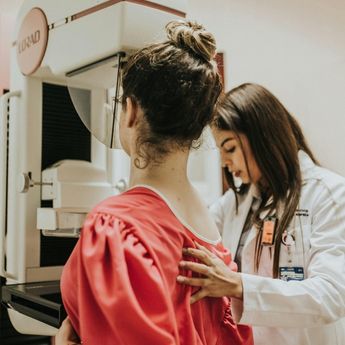According to breast cancer survivor Cathy Hemeon of Mount Pearl, Newfoundland, “Breast cancer patients offer up the best lived experiences and advice in terms of what the priorities should be for research.” Cathy, a CBCN board member, was therefore very pleased to participate in a national meeting that brought together Canadian patients, caregivers, and clinicians to set the top 10 priorities for research on post-mastectomy breast reconstruction.
The meeting took place in Toronto on July 2. It was organized by the James Lind Alliance Priority Setting Partnerships, a non-profit organization that brings together people with lived experience to establish priorities for research in various areas of healthcare. The Canadian Institutes of Health Research provided funding.
During the meeting, the 30 participants met in small groups to rank a list of 30 research questions that had been identified through two previous surveys. The groups’ priorities were fed into a database and a common list was presented to the entire group. By the end of the day, the group had chosen the top 10 priorities for research on post-mastectomy breast reconstruction. The priorities will be announced publicly at a later date.
Some of the priorities surprised Cathy, especially the issue of patients who want to live flat but still want a beautiful look. She had not previously thought of this topic as a reconstruction issue.
“As I listened, the priorities as to what I felt was important and those that I felt weren’t shifted from what I had previously thought,” said Cathy, who had a double mastectomy and immediate reconstruction three years ago. “I went in with several ideas, and my opinions changed as I listened to the other participants talk about what they thought was important.”
“As a patient, it was nice to see that people share your same opinion. It was also nice to see what everyone was feeling from their perspective and their experiences.”
Cathy feels that this process of patients setting the research agenda is invaluable. “In my opinion, there’s nothing better than a lived experience. If a patient can offer up any information at all, a research company wouldn’t have access to that important aspect of information ordinarily. A lot of the time, these companies know nothing about the lived experience and how patients are affected, so it is very important as a patient to participate in anything that you can to offer up your perspective.”
Cathy says she would be very pleased to participate in similar meetings in the future, and she encourages other breast cancer patients to do the same.
Cathy hopes that researchers in Canada and worldwide will investigate all the top 10 priorities identified.
Check back soon when we announce the final top 10 list of priorities!
Photo by Nicole Honeywill on Unsplash







